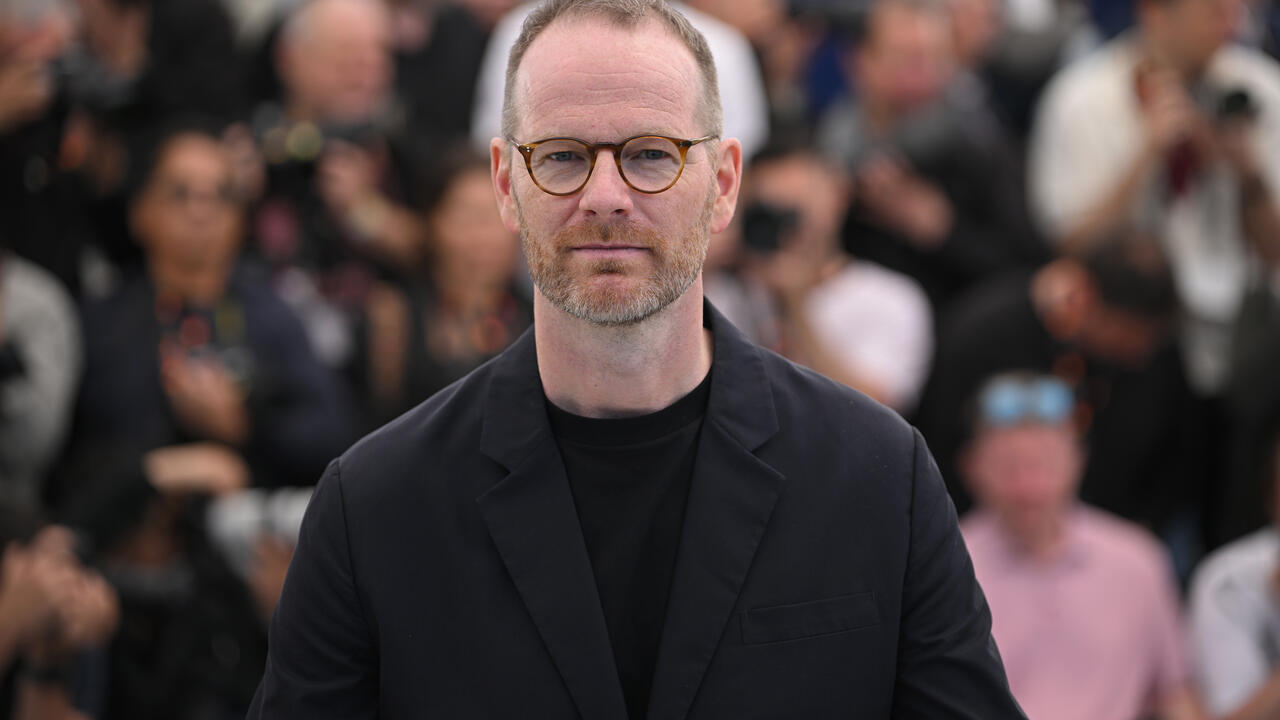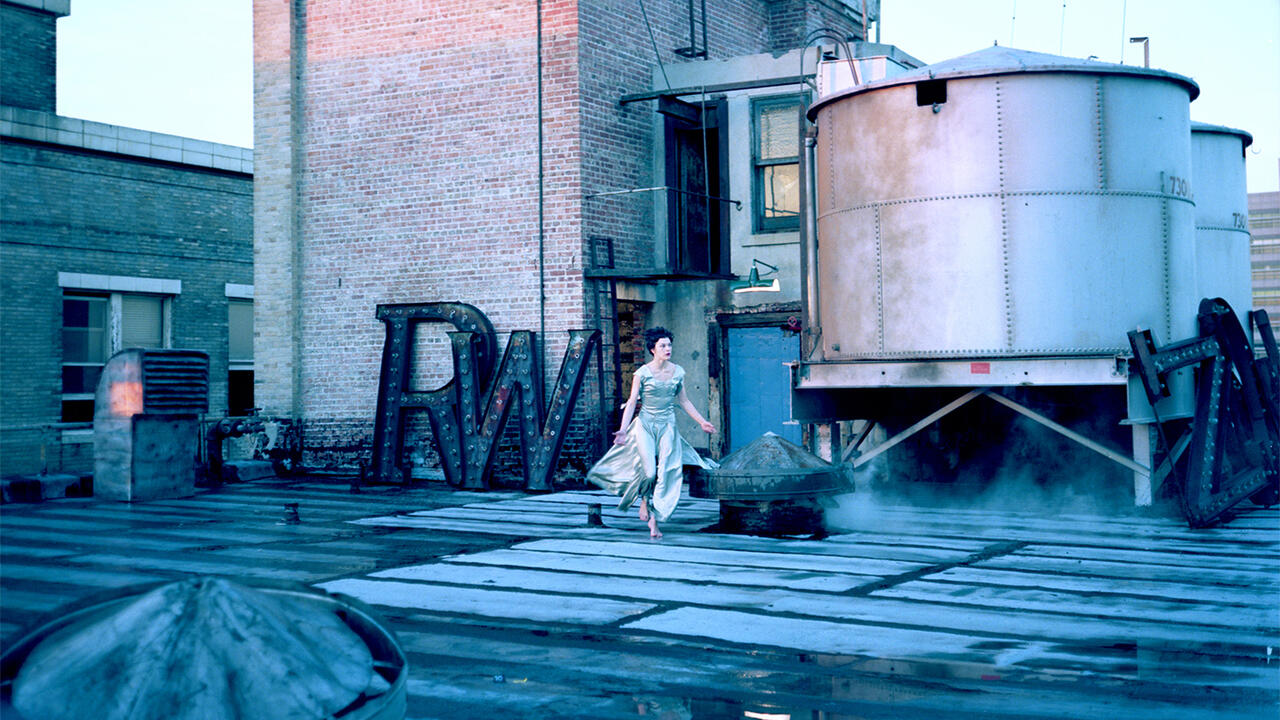At MASS MoCA, Cauleen Smith Builds an Afrofuturist World
In the artist’s largest survey to date, science fiction and narratives of black resistance offer a vision of a more inclusive future
In the artist’s largest survey to date, science fiction and narratives of black resistance offer a vision of a more inclusive future

At the threshold of ‘We Already Have What We Need’ – an exhibition of film, installation, textile and works on paper by multimedia artist Cauleen Smith at MASS MoCA – visitors are beckoned in by a three-and-a-half-minute video of a young girl twirling in a cape. Spin (2012), from Smith’s series ‘The Way Out Is the Way Two: Fourteen Short Films About Chicago and Sun Ra’ (2010–12), shows the girl perform a quick balletic hop before turning, arms outstretched, on a concrete ledge to the soundtrack of Sun Ra’s ‘El Is a Sound of Joy’ (1968, recorded 1956). The child’s repetitive spinning action combines exhilaration with focus and a simultaneous connection to, and transcendence of, her quotidian environment. This free yet attentive movement also serves as a legend for interpreting the visionary contents of the exhibition. Curated by Susan Cross, the show knits together several of Smith’s genre-defying approaches to social critique, 20th-century experimental cinema and Afrofuturist world-building.

Occupying almost the entire first floor of MASS MoCA’s Building 4, the exhibition features a range of Smith’s early and more recent films, including The Changing Same (2001), Black and Blue Over You (After Bas Jan Ader for Ishan) (2010) and H-E-L-L-O (2014). Also on display are BLK FMNNST Loaner Library 1989–2019 (2019), 32 new drawings of book covers that build upon Smith’s activist canon presented in Human_3.0 Reading List 2015–16 (2017); We Already Have What We Need (2019), a new video installation of tableaux featuring African figurines, plants, tchotchkes and other small objects displayed in front of grainy footage of protests, underwater scenes and cosmological events, all projected via CCTV onto five six-and-a-half-metre sails; and a selection of Smith’s iconic ‘In the Wake’ banners (2017), which were presented in the 2017 Whitney Biennial. The five embroidered silk-rayon velvet and satin flags host phrases and symbols that recur throughout Smith’s oeuvre. Camera, Pen, or Gun? (2017), a deep blue banner with an orange school pencil, microphone, camera shutter and guns on one side and the question, ‘Camera pen or gun?’ in baby blue letters on the other, recalls school shootings and the widespread filming of violence, including police brutality, on mobile phones.

The scope of the exhibition is vast, almost overwhelming. Each artwork demands discrete contemplation, while also prompting consideration of crisscrossing thematic threads – notably, Smith’s attention to black feminist histories, science-fiction conceits and speculative narratives, and fraught, or otherwise inauthentic, representations of African-American life within Western visual culture. There are unexpected resonances between explicitly sci-fi films such as The Changing Same, a story of two aliens stationed undercover on Earth, and subtler depictions of ulterior worlds: the mournful figure in Egungun: Ancestor Can’t Find Me (2017) wanders between the ocean and suburban Florida in a shell and seaweed costume that references Yoruba garb from West Africa and the indigenous Calusa people of what is now southwest Florida.
The exhibition’s title serves as both a personal and collective mantra in works that examine black resistance and self-sustenance, from the re-enactment of trauma – such as Smith’s re-staging of a town’s burial of a black schoolhouse in Remote Viewing (2009) – to the animation of historical portraiture by Malian artist Malick Sidibé in the multi-video installation I Want to See My Skirt (2006). The titular work continues this trajectory of fusing screen and installation to immersive effect: clips of earthly and cosmic environments play on television sets resting on velvet tables and are projected on immense screen-sails, their rigging (sandbags, ropes and tripods) exposed in structuralist fashion. The multiplicity of images distorts any sense of a singular narrative and invites the viewer to question the verisimilitude of objects as well as their filmic representations.

As I reluctantly left the galleries, my attention returned to the kinetics of Spin. The mixture of torque and surrender in the girl’s bold leap evokes the dynamics of discipline and improvisation underlying Smith’s process and projects. Across from Spin, Emerge and See (2019) – a silvery Mylar banner with pastel pink, orange and lavender panels – waved in the wind of a small fan, moving slightly more vigorously as passers-by opened and closed the exhibition doors. With this flag-cum-emergency blanket, Smith invites visitors to find meaning and protection in her work, offering abundant evidence that new worlds can be readily envisioned from materials germane to this one.
Cauleen Smith, ‘We Already Have What We Need’ continues at MASS MoCA, North Adams, USA, through April 2020.
Main image: Cauleen Smith, We Already Have What We Need (detail), 2019, mixed-media multi-channel video installation, dimensions variable. Courtesy: the artist, Kate Werble Gallery, New York, and Corbett vs. Dempsey, Chicago






















